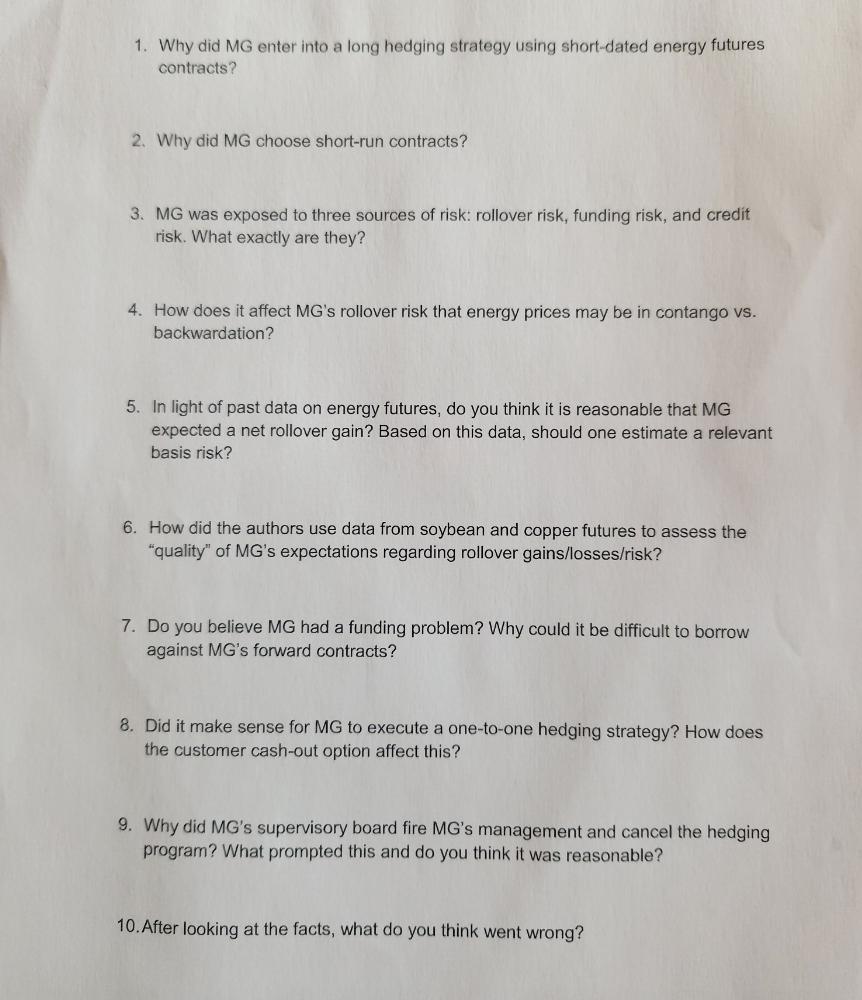Answered step by step
Verified Expert Solution
Question
1 Approved Answer
1. Why did MG enter into a long hedging strategy using short-dated energy futures contracts? 2. Why did MG choose short-run contracts? 3. MG

1. Why did MG enter into a long hedging strategy using short-dated energy futures contracts? 2. Why did MG choose short-run contracts? 3. MG was exposed to three sources of risk: rollover risk, funding risk, and credit risk. What exactly are they? 4. How does it affect MG's rollover risk that energy prices may be in contango vs. backwardation? 5. In light of past data on energy futures, do you think it is reasonable that MG expected a net rollover gain? Based on this data, should one estimate a relevant basis risk? 6. How did the authors use data from soybean and copper futures to assess the "quality" of MG's expectations regarding rollover gains/losses/risk? 7. Do you believe MG had a funding problem? Why could it be difficult to borrow against MG's forward contracts? 8. Did it make sense for MG to execute a one-to-one hedging strategy? How does the customer cash-out option affect this? 9. Why did MG's supervisory board fire MG's management and cancel the hedging program? What prompted this and do you think it was reasonable? 10. After looking at the facts, what do you think went wrong?
Step by Step Solution
There are 3 Steps involved in it
Step: 1
Answer 1 MG entered into a long hedging strategy using shortdated energy futures contracts to manage its exposure to fluctuations in energy prices By entering into these contracts MG aimed to lock in ...
Get Instant Access to Expert-Tailored Solutions
See step-by-step solutions with expert insights and AI powered tools for academic success
Step: 2

Step: 3

Ace Your Homework with AI
Get the answers you need in no time with our AI-driven, step-by-step assistance
Get Started


